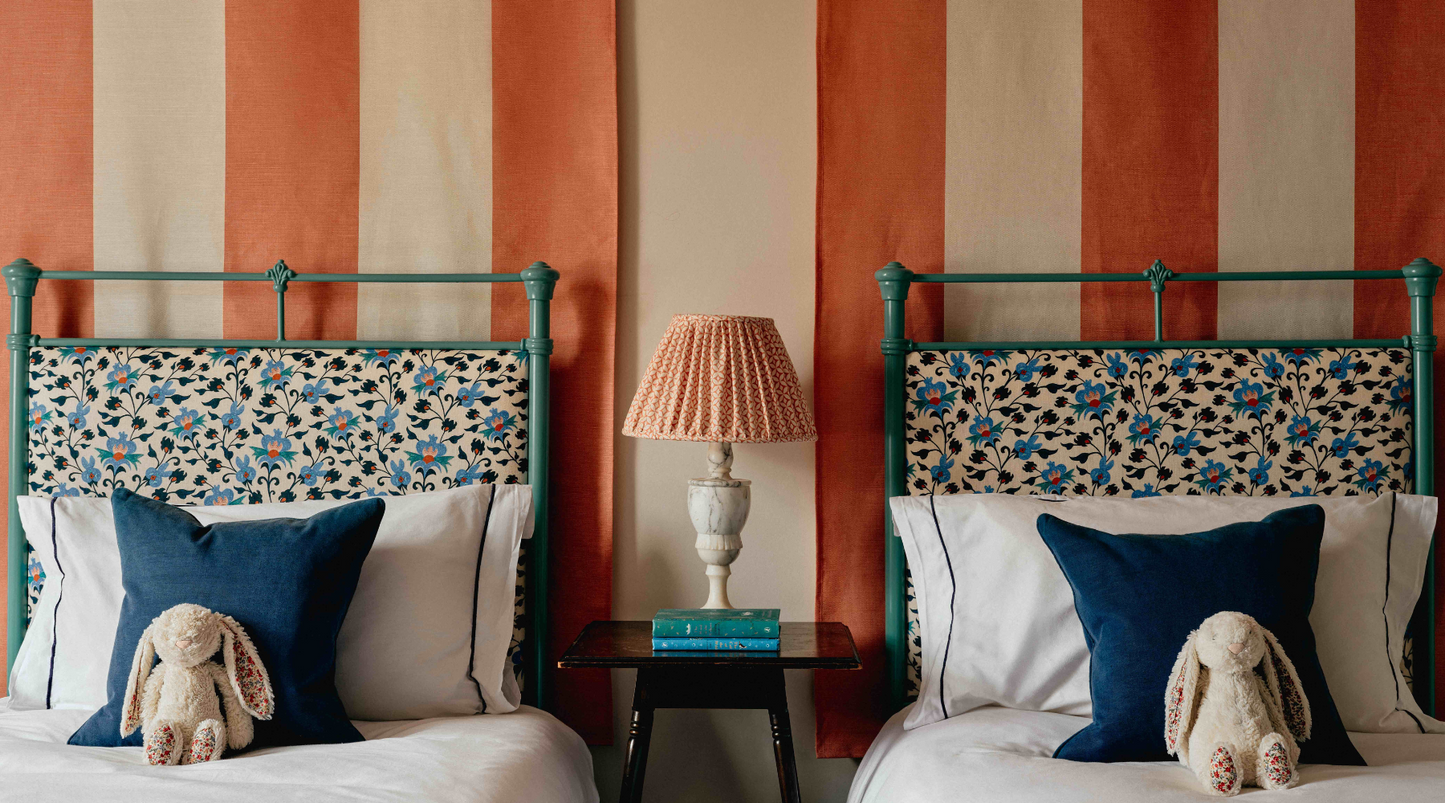
We are very excited to have the wonderful Jules Haines, founder of Haines Collection talking about sustainability in the industry. Haines Collection is a sustainable interiors business based in the UK that specializes in repurposing leftover fabrics from luxury brands. With a passion for design and sustainability, Jules created Haines Collection to reduce textile waste by offering high-end fabrics and materials that would otherwise be discarded. Her company promotes eco-friendly interior design by making it easier for consumers and designers to access discounted, premium materials while contributing to a circular economy. Jules is recognized for her innovative approach to combining luxury with sustainability in the interior design industry.
1. What sustainable practices do you incorporate into your own home interior projects?I will always buy second hand where possible and if I buy new I find the item that is low impact. When I’m painting I usually use Edward Bulmer Paint, I also like brands that have sustainable packaging or will deliver with no packaging i.e. Naturalmat; who have their mattresses in reusable bags that they deliver and take away.
2. How do you select eco-friendly materials and products for your designs?
I always think about - what’s it made of (is it natural) , where is it from, who made it, how did it get here, how can I look after it, will it last a long time and at the end of it’s life how can it be recycled or reused.
3. Can you share examples of recent projects where sustainability was a key focus?
My kitchen was a recent project, it is about 20 years old but still in good working order. The kitchen/dining area has striped walls - the paint we have used is Edward Bulmer Natural Paints. The mantelpiece has been made up of old heavy wooden shelves that used to flank it. I took down the shelves, rotated them to be vertical and painted the whole piece. A local artist kindly decorated it for me afterwards. I decided to make new cupboard fronts from chipboard and the leather handles are old leather belts that I cut and put a bolt through!
4. What steps do you take to minimize waste during the design and renovation process?
I’ve actually not done one but I’ve heard of designers specifically not allowing a skip on site so everything has to be rehomed or upcycled. Love the idea but what a challenge!
5. How do you balance sustainability with aesthetic and functional requirements in your projects?
I think it’s all about doing your best and being realistic about what you can do. There may not be not be an eco alternative or perhaps you can’t find it secondhand. I know I searched for an eco alternative for fitted cupboards in my bedroom. I contacted brands with ex-display kitchens as some often do cupboards and I did find one possible option but actually it was too big. I could have gone for two free standing second hand cupboards but this would mean losing a lot of space. My only option again was fitted cupboards but I was able to ask for FSC MDF and use metal handles to avoid any plastics.
6. What certifications or standards do you look for in sustainable furnishings and materials?
I always buy second hand first so certifications are not always available, but I know that is lowering my impact. If I buy new, I will always go for natural materials. When it comes to certifications for wood, start with FSC, PEFC and ideally BiG. For textiles I look for GOTS certification and OEKO-TE.
7. What advice would you give to homeowners who want to make their interiors more sustainable?
First think about what you can use in your home already and perhaps something can be upcycled or even moved from another room. That in itself can refresh a space without any new purchases. The power of fresh paint or wallpaper is huge, so that’s another thought.
Secondly, I think about what’s the minimum I can do to this space to make the changes I need. I also would recommend to aim for a feeling in a room rather than become set on pieces that you are coveting at the time. This can avoid falling into the trap of trends. Also ensure your design is fluid which will allow you to source what is local and available. Allow time to search secondhand if possible, this can mean that you will be able to source exactly what you want by always keeping an eye out at auctions, facebook marketplace or ebay.



